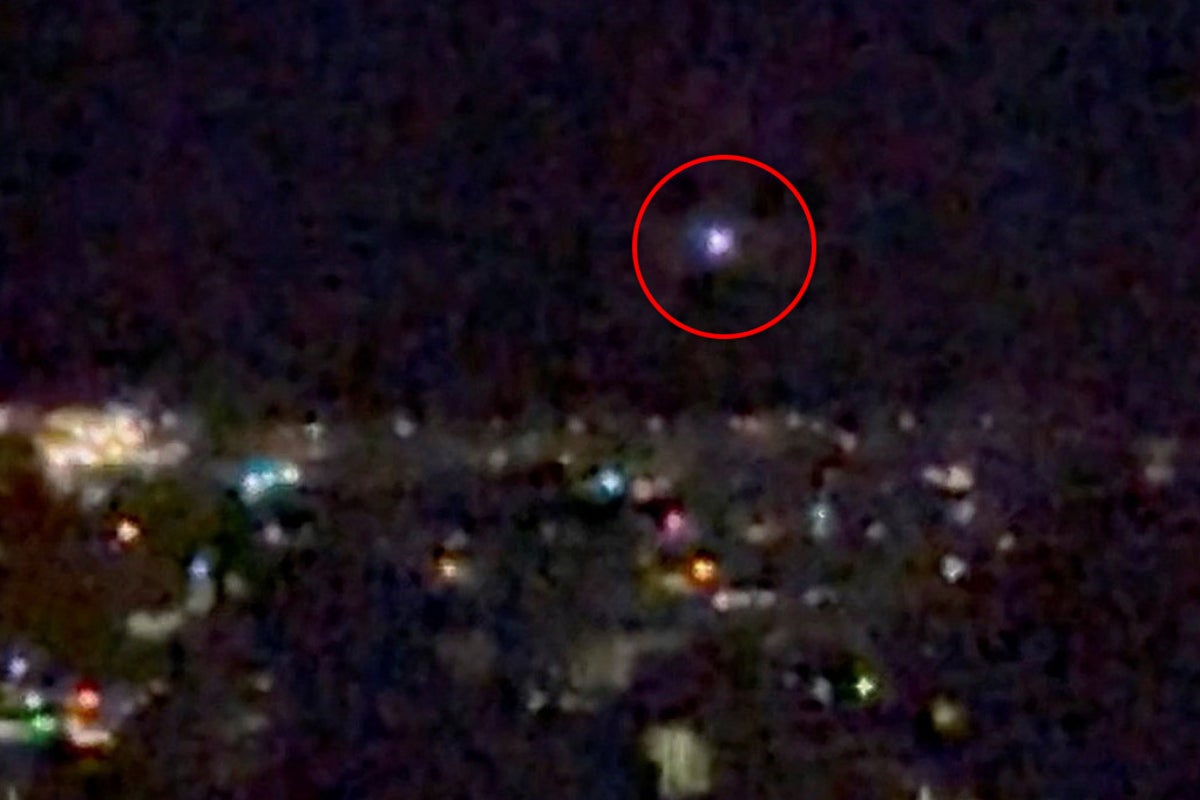
Denmark has said it was the victim of a “hybrid attack” after repeated unexplained drone activity near five of its airports this week.
The most recent was Aalborg Airport, in north Denmark, which closed on Friday following the drone sightings, while Esbjerg, Sonderborg and Skrydstrup regions all remained open despite similar incidents.
They came just two days after Danish prime minister Mette Frederiksen refused to rule out Russian involvement when drone sightings forced Copenhagen Airport into shutdown for four hours, in what she described as a “serious attack on critical Danish infrastructure”.
After Wednesday’s incident, defence minister Troels Lund Poulsen warned that it “certainly does not look like a coincidence, it looks systematic, this is what I would define as a hybrid attack”.
Similar drone sightings occurred Sweden this week, including two mysterious drones spotted over the Karlskrona archipelago in the country’s southeast, and in Norway, where Oslo Airport was forced to close for three hours on the same night as the incident in the Danish capital.
As Danish politicians hint at a real possibility of Russian involvement, The Independent takes a look at why Moscow would seek to target a country so far away.
Russia and Denmark’s fraught recent history
As Danish politicians hint at a real possibility of Russian involvement, questions are now raised over why Moscow would seek to target a country so far away.
“What’s been overlooked in a lot of the foreign media coverage is the history, in terms of Russia making angry noises towards Copenhagen,” Keir Giles, an expert on the Russian military and author of Russia’s War on Everybody: And What It Means For You, explained to The Independent.
This includes the “old litany of nuclear threats, precisely because Denmark is interested in defending itself, because it is looking at purchases of long range precision strike munitions that Russia would not like it to have,” he added.
Last Wednesday, Denmark said it would acquire “long-range precision weapons” for the first time as it cited the need to deter Russia.
“With these weapons, the defence forces will be able to hit targets at long range and, for example, neutralise enemy missile threats,” Ms Frederiksen said, explaining the weapons could include either missiles or drones.
It provoked a sharp reaction from Moscow, with Russian ambassador to Denmark Vladimir Barbin describing the Danish justification about needing to strike long-distance targets as “pure madness”.
Barbin then issued a thinly-veiled nuclear threat to Copenhagen.
“No one, anywhere, ever in the world has considered threatening a nuclear power publicly. These statements will undoubtedly be taken into account,” he wrote on Telegram.
“From now on, we must assume that Denmark is not only considering the possibility of a direct military confrontation with Russia, but is also preparing for such a scenario.”
Katja Bego, a senior research fellow in Chatham House’s International Security programme, said that of the countries which don’t border Europe, Denmark has been “one of the frontrunner countries” in terms of challenging Russian aggression.
“There’s been this longer term pattern that Denmark is one of those places that’s really pushing the rest of the [Nato} alliance to increase [military] support,” she added.
Sowing distrust in the Danish population
Russia could be cynically trying to sow distrust in the Danish population, which has been largely in favour of significant support for Ukraine, Ms Bego explained.
“[They are] kind of selling distrust or division among the population. Other countries that were targeted here, were all very staunch supporters of Ukraine, and countries near Ukraine,” she said.
“These are Ukraine’s strongest supporters, which I think is part of a longer term pattern. We’ve seen quite a lot of this activity in the Baltic Sea.
“So I think the choice of countries here is certainly not random.”
The benefit of doing this, she explains, is that it “creates fear” and may make populations “less willing to support Ukraine moving forward”.
There is a significant financial cost to use “incredibly expensive missiles” to shoot down “really cheap drones”, as she says was done in the case of Russia’s incursion into Poland with around 20 drones earlier this month.
Is Moscow testing the waters for an expanded war?
It’s been widely suggested that Moscow is looking to probe Nato defences to ascertain how they would really respond to a more meaningful incursion of Russia’s military.
“Nobody is in any doubt that Russia’s ambition goes far beyond Ukraine, and in order to carry out that ambition, Russia needs to know whether it will be opposed,” Mr Giles said.
Although it is unconfirmed whether Russia was involved with the recent drone incidents, he said, Moscow still learns a great deal from it even if it was “just local idiots”.
“One of the primary benefits is understanding more about the capacity of Nato and individual countries to counter Russian operations and the willingness to actually respond in a meaningful fashion,” he said.
But the capacity for victim states to deal with the threat has been proven to be “very limited”, he added.
The drone incidents would be a good means of “normalising the state of conflict”, he added, allowing Russia to get to a position where “these kinds of Russian actions are part of the background noise, as opposed to something which ought to be unacceptable”.
Ms Bego agrees, arguing that it may be Russia “testing the waters, or trying to see how Alliance members of Nato might respond”.
She added: “In this case, these are kind of lower key drones, but [the response] would not necessarily look that dissimilar if you were looking at a bigger escalation.”
